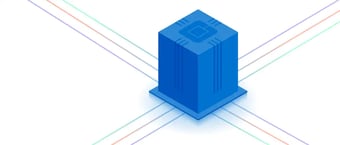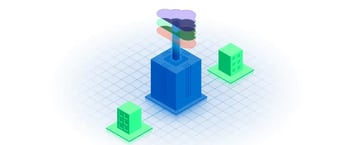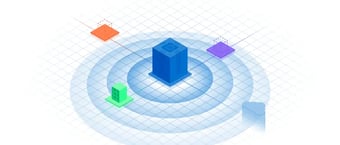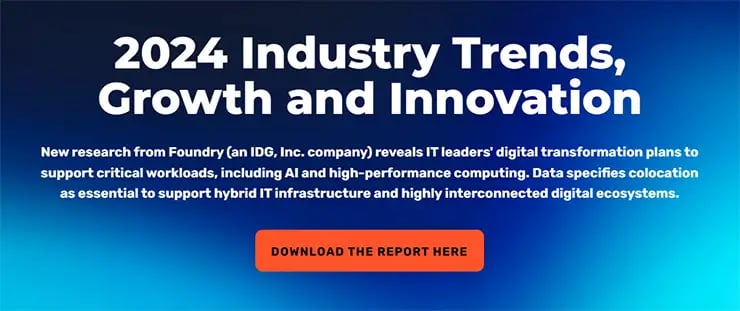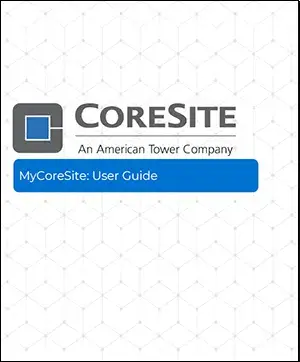
OpenTelemetry: A New Foundation for Observability
OpenTelemetry is emerging as an essential foundational element for observability, enabling organizations to monitor the performance of applications and infrastructure in data centers and the cloud.
Editor’s Note: CoreSite welcomes Pete Goldin, Editor and Publisher, APMdigest, as a guest blogger on Connect[ED]. APMdigest is an IT community blog that covers IT performance, including Application Performance Management (APM), AIOps, observability and related technologies and topics.
Tracking and acting on application performance is more challenging as the complexity of multicloud infrastructure and application distribution increases. Telemetry data provides one key to delivering great user experiences and understanding where to locate applications to increase their value. This blog discusses how OpenTelemetry is positioned as an IT industry favorite to take on observability challenges, due to its open-source, vendor-neutral support for observability.
OpenTelemetry Enabling Observability
Before we discuss OpenTelemetry, it is important to talk about observability. Gartner defines observability platforms as “products that ingest telemetry (operational data) from a variety of sources including, but not limited to, logs, metrics, events and traces. They are used to understand the health, performance and behavior of applications, services and infrastructure.”1
Observability solutions are employed by a wide variety of IT teams, including IT operations, DevOps, software development, site reliability engineers (SREs) and others to maintain IT availability and performance, and deliver a rewarding end-user experience.
OpenTelemetry, a Cloud Native Computing Foundation (CNCF) project also called “OTel,” is quickly becoming the industry preference for collecting telemetry for observability. This open source vendor-neutral standard empowers users to instrument, generate, collect and export telemetry data to help analyze software and infrastructure performance and behavior. More than just an industry standard, however, OpenTelemetry is an open source framework and suite of tools, including APIs and SDKs.
OpenTelemetry is based on the three pillars of observability: traces, metrics and logs.
- Traces are records of service request paths across distributed systems.
- Metrics are measurements of activities over a period of time.
- Logs are timestamped text records of events.
Together, these three types of data provide comprehensive visibility into system and application health, delivering actionable insight to identify and solve performance and availability issues.
Metrics, logs and traces are just the beginning, however. OpenTelemetry recently added profiling, and contributors to the project are currently working on standards to capture additional types of observability data, which will likely include real-user monitoring (RUM), resource utilization monitoring such as eBPF, and even generative AI performance data, to name just a few possibilities.
Gaining Industry Momentum
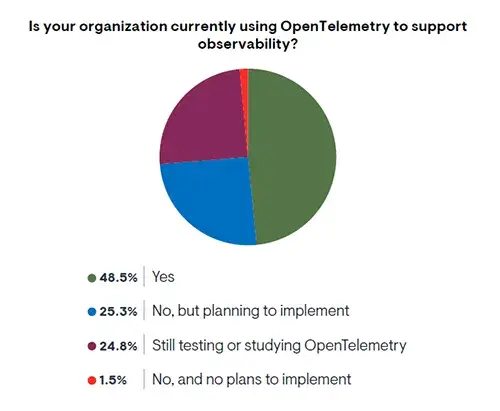
Source: Enterprise Management Associates
“OpenTelemetry is fast becoming the dominant observability telemetry standard in cloud-native applications,” according to Elastic, an observability provider. “Adopting OpenTelemetry is considered critical for organizations that want to be prepared for the data demands of the future without being tied to a specific vendor or the limitations of their existing technologies.”2
Because OpenTelemetry is an open source standard, the industry acceptance of this technology is critical to its growth. I recently conducted a survey of IT professionals, in partnership with analyst firm Enterprise Management Associates (EMA), showing that OTel is widely known and backed by positive expectations from the worldwide IT community – more than 81% consider OpenTelemetry mature enough to use today, and about 90% express support for where OpenTelemetry is heading.3
That survey culminated in a research report, Taking Observability to the Next Level: OpenTelemetry’s Emerging Role in IT Performance and Reliability, that you can find here, from Enterprise Management Associates (EMA), an industry analyst and consulting firm that specializes in IT and data management technologies.
In terms of OpenTelemetry's role in observability, just under two-thirds of survey respondents believe OpenTelemetry is a very important or critical enabler of observability in general, as well as their own observability strategy. About 92% of survey respondents have positive expectations about OpenTelemetry's potential impact on their observability capabilities, representing an overwhelming endorsement by the IT industry.3
Usage of OpenTelemetry also shows strong numbers. According to the survey findings, almost half (48.5%) of respondents use OpenTelemetry, and another quarter are planning to implement, while most of the remainder are still studying the technology. Only 1.5% had no plans to use it. These stats indicate a bright future for the standard.3
Another interesting finding of the research is that awareness, importance and adoption of OpenTelemetry increase in correlation with the maturity of their organization's observability practice. In other words, the IT teams that are more evolved in terms of observability are the ones fully embracing OTel.
Delivering Proven ROI
OpenTelemetry is compelling because it offers a variety of benefits, as well as measurable ROI. This is backed by the survey results; almost half (46%) of organizations using OpenTelemetry are gaining more than 20% ROI, and another 40% are achieving 10%-20% ROI. This makes the business case for OpenTelemetry very strong.3
By simplifying data collection for observability and breaking vendor lock-in, OpenTelemetry helps reduce overall observability costs, one of the primary drivers of the ROI. Additional benefits of OpenTelemetry reported in the survey include increased productivity for both IT operations and development teams, improved system and application performance, reduced downtime and enhanced customer experience.
OpenTelemetry: A Competitive Advantage
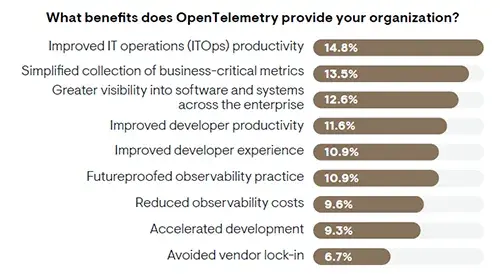
Source: Enterprise Management Associates
The EMA report based on the survey states, “OpenTelemetry is no longer an experiment – it’s an enterprise-ready standard with a suite of complimentary tools that is reshaping how IT organizations manage performance, reliability, and user experience. Organizations that successfully harness the power of OpenTelemetry will outperform the competition in service reliability and customer satisfaction.”
Whether your business depends on applications and infrastructure in on-premises data centers, colocation facilities or the cloud, performance is always mission-critical. Your customers have zero tolerance for latency or downtime. Just seconds of delay can result in app or website abandonment, and downtime can literally drive your customers straight to the competition – and this directly impacts the bottom line. According to recent research from New Relic, outages can cost organizations up to $1.9 million for every hour of downtime.
For these reasons, OpenTelemetry is already becoming a “must-have” competitive advantage for any company in the digital economy. By delivering more insightful data about application and system health, OpenTelemetry supports the core of the observability mission. With OTel, IT teams are empowered with greater visibility to find performance issues before end users experience them.
The report concludes with a wake-up call: The findings indicate that your competitors have already started using OpenTelemetry to improve digital performance, availability, and the user experience.
Know More
Learn more about OpenTelemetry advantages, challenges and implementation trends in EMA's report: Taking Observability to the Next Level: OpenTelemetry's Emerging Role in IT Performance and Reliability
The Open Cloud Exchange® is CoreSite's platform for automating enterprise network services, and part of the MyCoreSite service delivery platform.
Contact us to find out how CoreSite data center solutions can help you better manage your multicloud deployment.
References
-
What are Observability Platforms?, Gartner (source)
-
What is OpenTelemetry?, Elastic (source)
-
Taking Observability to the Next Level: OpenTelemetry’s Emerging Role in IT Performance and Reliability, Enterprise Management Associates, March, 2025 (source)
-
New Relic Study Reveals IT Outages Cost Businesses Up to $1.9 M Per Hour, New Relic, October 22, 2024 (source)

